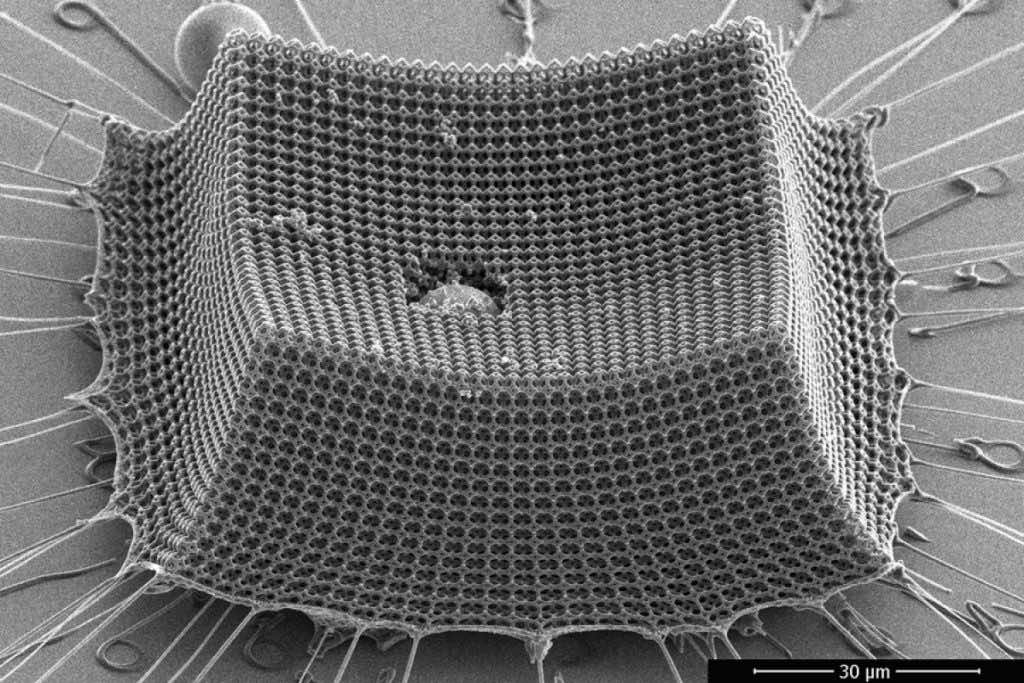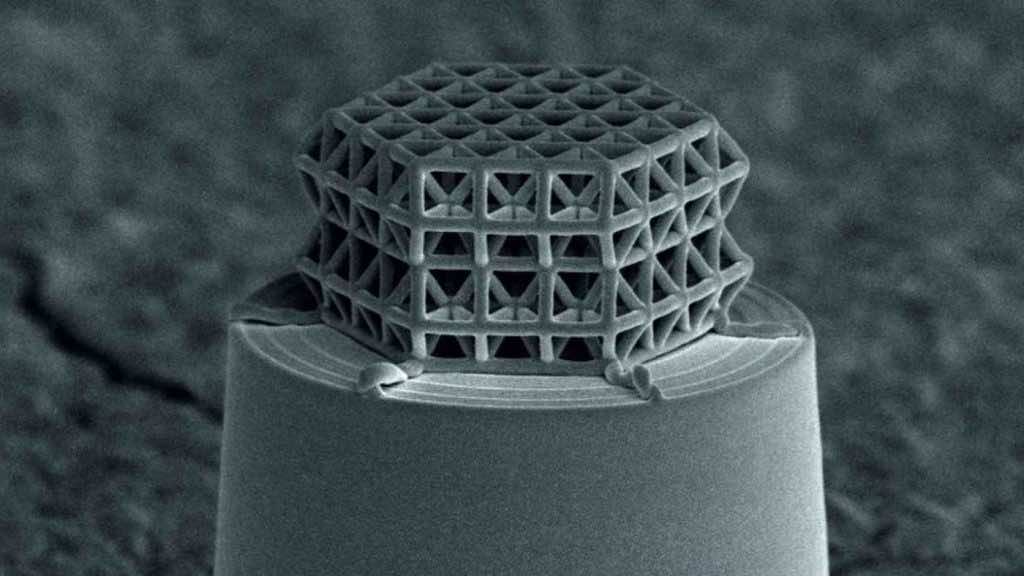What is better than light weight and slim material for the next generation of armor? From sea snails to animal scales to finely tuned foams, the scientists have been working tirelessly to make such a material that will outperform all others. Recently the scientists came up with new material with the help of nanoscale engineering, and it has been reported to surpass Kevlar and steel as far as the quality is concerned.

The new material had to first undergo a photosensitive resin, which was handled with lasers to form a lattice pattern of repeating microscopic struts. This material was then put in a high-temperature vacuum chamber for the polymer to be converted into ultralight carbon with an architecture formerly instigated by special foams created to absorb any effects.

“Historically, this geometry appears in energy-mitigating foams,” says lead author Carlos Portela. “While carbon is normally brittle, the arrangement and small sizes of the struts in the Nano architected material gives rise to a rubbery, bending-dominated architecture.”
By modifying a material’s finely tuned architecture, its properties could also be changed with different arrangements of the carbon struts giving it distinct properties. This is a natural characteristic of materials made up of nanoscale structures, but the team used an appealing approach to study these effects under real-world conditions.

“We only know about their response in a slow-deformation regime, whereas a lot of their practical use is hypothesized to be in real-world applications where nothing deforms slowly,” says Portela.
The study mainly helps the scientists to know the potential of their new armor material. The experiments involved a glass slide layered with gold tape and silicon oxide particles on one side. Then an ultra-high-speed laser is beamed at the slide, which in return produces a fast-expanding gas. Then it sends the particles from the surface towards the aiming point. After that, the speed of the projectiles is adjusted, giving the scientists a chance to play with a variety of velocities.

This included some deep supersonic velocities with speeds ranging from 40 to 1,100 meters per second (89 to 2,460 mph). High-speed cameras are capturing the effects for further study. Different designs were also tested with carbon struts of contrary thicknesses. This approach enabled the team to settle on the ideal design through which particles seem to settle in the material rather than tore right through it.
“We show the material can absorb a lot of energy because of this shock compaction mechanism of struts at the nanoscale, versus something that’s fully dense and monolithic, not nano-architected,” Portela says.
This new material intended to be the next-gen armor is thinner than the width of a human hair having the ability to absorb the effects more proficiently than steel, aluminum, or even Kevlar. The armor made of tiny carbon struts that is lighter yet stronger than the traditional materials could be the next best option available.

“The knowledge from this work … could provide design principles for ultra-lightweight impact-resistant materials [for use in] efficient armor materials, protective coatings, and blast-resistant shields desirable in defense and space applications,” says co-author Julia R. Greer.


